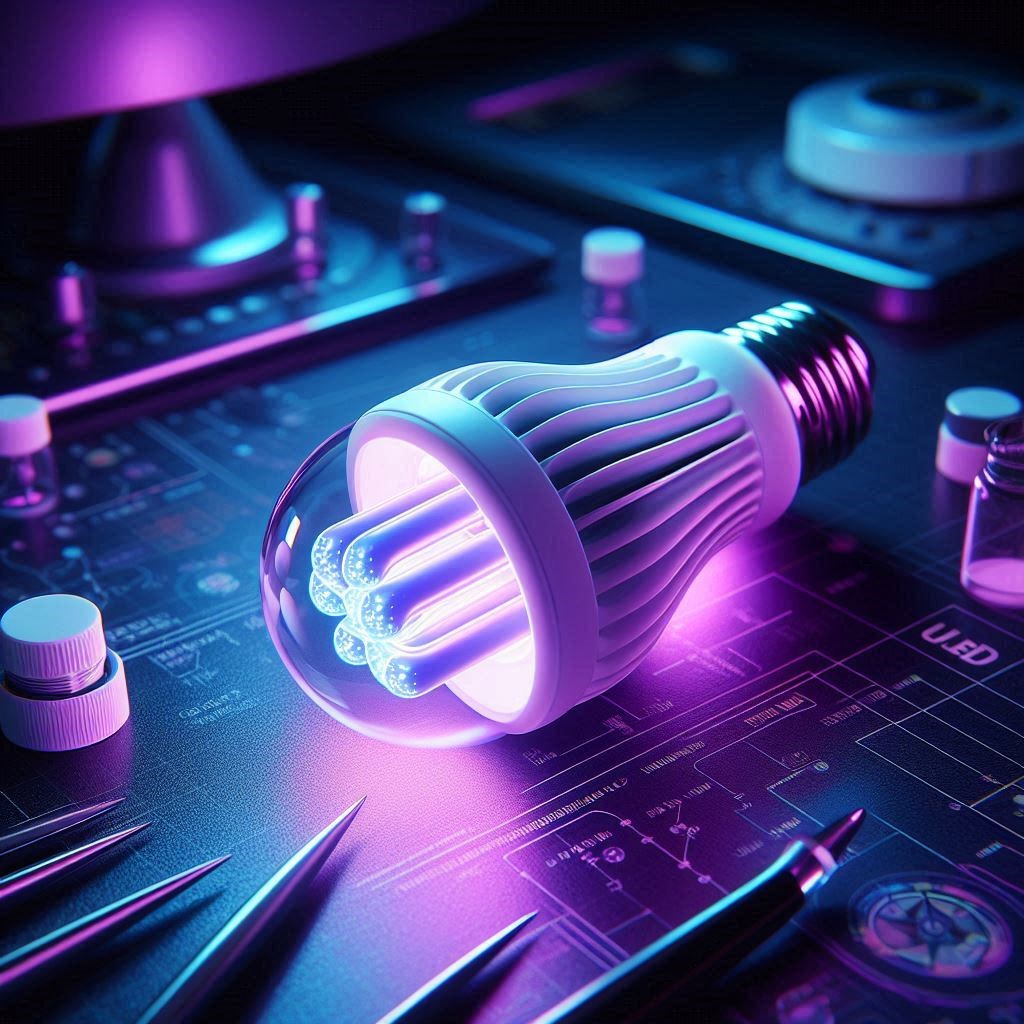The ultraviolet (UV) light-emitting diode (LED) industry is a rapidly evolving sector within the broader lighting and technology markets. UV LEDs, known for their capability to emit ultraviolet light, are increasingly being used across various applications, from disinfection and curing to forensic analysis and beyond. This article delves into the current state of the UV LED industry, explores key growth drivers, and provides insights into future trends shaping the market.
What are Industry growth trends :
The UV LED Industry is projected to grow from USD 1.2 billion in 2023 to USD 2.8 billion by 2028, registering a CAGR of 19.7% during the forecast period. Some of the significant factors contributing to the growth of the UV LED market include longer product lifetime of UV LED as compared to a conventional UV lamp, growing inclination toward eco-friendly products, stringent regulations regarding use of green products, raising concerns regarding safe drinking water in emerging nations, increasing demand for ultrapure water, and the advent of UV LED application in the automotive industry.
Key Market Segments:
- UV-C LEDs: Known for their disinfection capabilities, UV-C LEDs are used extensively in water, air, and surface purification. Their effectiveness in killing microorganisms has led to a surge in demand, especially in the wake of increased hygiene concerns due to global health crises.
- UV-A LEDs: Primarily used in curing applications, UV-A LEDs are essential for the curing of inks, coatings, and adhesives. The growing demand for UV curing in manufacturing and printing industries is a significant driver for this segment.
- UV-B LEDs: Although less common, UV-B LEDs find applications in areas such as dermatological treatments and certain research applications. Their role in medical and research settings contributes to the overall market growth.
Technological Advancements in the UV LED Industry
Technological advancements in the UV LED industry are driving substantial growth and expanding application possibilities. Key innovations include enhanced efficiency and longevity, with modern UV LEDs offering higher irradiance and extended operational lifespans. Miniaturization and integration with smart technologies enable the development of compact, IoT-connected devices. Advanced materials and coatings improve performance and durability, while precision wavelength control allows for tailored applications in disinfection, curing, and diagnostics. Additionally, energy-efficient designs and eco-friendly materials contribute to sustainability, and improved thermal management ensures reliable operation. These advancements collectively enhance the versatility and effectiveness of UV LEDs across various sectors.
Download PDF Brochure @
https://www.marketsandmarkets.com/pdfdownloadNew.asp?id=143107738

The ultraviolet (UV) LED market is booming, and it’s no surprise why. UV LEDs are proving to be incredibly versatile, finding new applications across various industries. Here’s a look at what’s fueling this growing demand and how UV LEDs are making a splash in different sectors.
- Health and Hygiene Take Center Stage
Disinfection Power:
- Pandemic Response: The spotlight on hygiene and cleanliness, especially during the recent health crises, has driven up the demand for UV-C LEDs. These LEDs are effective at killing germs and are now common in disinfecting everything from air and water to surfaces in hospitals and public spaces.
- Consumer Devices: At home, people are snapping up UV-C gadgets like portable sanitizers and sterilization boxes to keep their personal spaces germ-free.
- Industrial and Manufacturing Innovations
Speedy Curing:
- Efficient Production: In manufacturing and printing, UV-A LEDs are game-changers. They’re used to quickly cure inks, coatings, and adhesives, making production faster and improving quality.
- Eco-Friendly Choices: UV curing is also more environmentally friendly than traditional methods, as it uses fewer solvents and emits less pollution.
Quality Checks:
- Forensic and Material Analysis: In forensic science and quality control, UV LEDs help uncover hidden details that are crucial for investigations and inspections.
- Emerging Markets on the Rise
Expanding Economies:
- Asia-Pacific and Latin America: Fast-developing regions like Asia-Pacific and Latin America are driving demand for UV LEDs. As these areas industrialize and build new infrastructure, they’re increasingly turning to UV LEDs for water treatment, air purification, and more.
- Urban Growth: As cities expand, the need for UV-C systems in public spaces and smart infrastructure grows, making UV LEDs a popular choice.
- Technological Advancements Boosting Appeal
Better Performance:
- More Power: Advances in UV LED technology mean higher light output and better energy efficiency. This makes UV LEDs not only more effective but also more cost-efficient.
- Longer Life: New developments have extended the lifespan of UV LEDs, making them a reliable choice for various applications.
Smart Integration:
- IoT Connections: Modern UV LEDs are getting smart. Integrating with Internet of Things (IoT) technology allows for real-time monitoring and automated control, enhancing their functionality in many settings.
- Environmental Benefits Driving Adoption
Eco-Friendly Options:
- Green Technology: UV LEDs are more environmentally friendly than traditional UV sources like mercury lamps. They’re free of hazardous materials and consume less energy, aligning with global sustainability efforts.
- Energy Savings: With better energy efficiency, UV LEDs help cut operational costs and support greener practices.
The UV LED market is experiencing a surge in demand, driven by their growing applications in health, industry, and emerging markets. Technological advancements and a focus on sustainability are also contributing to their popularity. As UV LEDs continue to evolve and find new uses, they’re set to play an increasingly important role in our everyday lives and industries, offering innovative solutions that meet the needs of a modern, health-conscious world.
